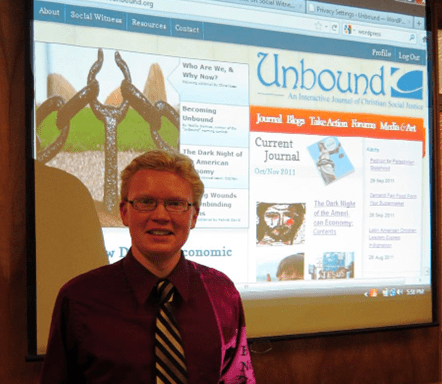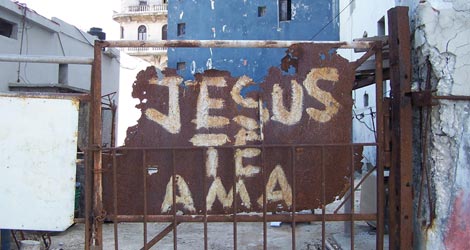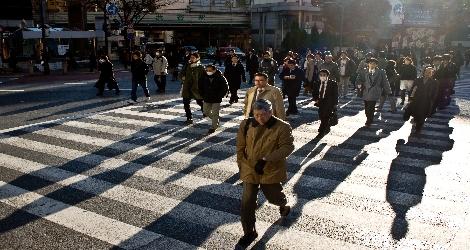Rationale
Troubled Times
 Headlines in every community, small town, rural area, and urban city, put in bold print what lives in many homes as personal pain and wrenching fear: State jobless rate climbs higher, National unemployment now at 10.2 percent, Underemployment at 17 percent, One in four families suffer job loss in past year, Many youth have no career ladder to climb, Pension losses estimated in trillions, Weak job market fuels more foreclosures, Personal bankruptcies at record high, State budgets strapped, Cities struggle to provide basic services, No police response to breaking and entering, Requests for food assistance soar, 49 million Americans hungry, Poverty rising.[i]
Headlines in every community, small town, rural area, and urban city, put in bold print what lives in many homes as personal pain and wrenching fear: State jobless rate climbs higher, National unemployment now at 10.2 percent, Underemployment at 17 percent, One in four families suffer job loss in past year, Many youth have no career ladder to climb, Pension losses estimated in trillions, Weak job market fuels more foreclosures, Personal bankruptcies at record high, State budgets strapped, Cities struggle to provide basic services, No police response to breaking and entering, Requests for food assistance soar, 49 million Americans hungry, Poverty rising.[i]
These losses to human well-being and dignity impact each of our congregations in some way. Few pastors today have lived through such difficult times. In the past one could count on community resources to help with a family in stress. Today community service organizations themselves are struggling to survive. Community amenities that soften the hard edges of life, such as libraries, recreational centers, neighborhood parks, youth sports and school bands, are being cut from government budgets just as more families need them. Even the basic foundations of community life, police and fire departments, school systems and community colleges, public transportation and infrastructure, are being cut back. Many communities are unable to maintain what were once considered essential services.
As we wrestle with how to respond to the growing human needs in our own communities and congregations, we learn that other populations are also battered by the consequences of suddenly unreliable economic theories. Hard won reductions in poverty achieved in many countries during the 1990s have been too quickly reversed.[ii] More than one billion people worldwide are undernourished and need greater emergency food response. We are told that a child dies every six seconds from malnutrition.[iii] But we have been hearing about world hunger for a lifetime. Now, as hunger, job loss, homelessness, underemployment, loss of health insurance and other blows to family well-being appear in our own neighborhoods, perhaps we begin to realize that for some in the human family such deprivation, and worse, has been a way of life for generations. What media describe as a new economic crisis is not at all new for too many people. It is not new to some of our communities and churches even here in the United States. Some of our urban and rural churches, having struggled for decades with depression level conditions as daily realities, are further tightening their already too-tight belts to keep doors open and compassion flowing to ever growing numbers of God’s children in need.[iv] As in the Great Depression, a growing number of congregations will be forced to close.
Other headlines project a vastly different reality. “Wall Street profits return, big bonuses likely.” “Wealth gap widens: Chasm between wealthiest households and everyone else has grown more than 50 percent since 1960s.” “Wealth inequality is vast and growing.”[v] Compensation at the largest investment banks for 2009 is projected to total around $140 billion. This continuing reward structure increases the danger of our becoming more of a class society, with limited social mobility for many and political control by powerful interests and elites. We learn that the United States has the highest rate of economic inequality among all industrialized nations.[vi] In spite of our wealth, we learn that a comparison of national health indicators ranks the United States as number thirty-seven in the community of nations.[vii] We wonder why that is and whether it matters. How are Christians to evaluate this economy, our roles in it, and our responsibilities to it? And if the Presbyterian Church (U.S.A.) is a “middle class church,” how do we adapt when the middle class declines?
These questions are sharpened as we face the realization that the billions of dollars spent to stabilize the economy, through the Troubled Asset Recovery Program (TARP) and other parts of the stimulus package, have helped an even-more concentrated financial sector return to profitability while unemployment remains dramatically high and the U.S. manufacturing sector continues to evaporate. While the decline of manufacturing began earlier and is due partly to a deliberately undervalued Chinese currency, the tilt toward massive balance of payments deficits and high consumer debt also reflects the growth of the financial sector over the past 30 years. Even with gigantic infusions of public money, bank lending has been limited and consumer finance protections have been stubbornly resisted, particularly in the area of credit card fees. Of more consequence to overall economic stability, the incentives for speculative currency “bets,” leveraged buyouts, junk bonds, collateralized debt obligations and credit default swaps—components of the credit meltdown—remain largely unregulated and allowed to impact consumer finance. It is this non-producing part of the economy, “Wall Street,” and its finance lobby, which spent $476 million on the 2008 election campaign alone, that has benefited while “Main Street” and most family budgets have suffered.[viii] No wonder that many prominent economists, including some who were instrumental in conceptualizing our current laissez-faire economic model, now admit that their theories were flawed.[ix] Others go further in labeling our economically troubled times as a “global crisis of American capitalism.”[x]






Unbound Social